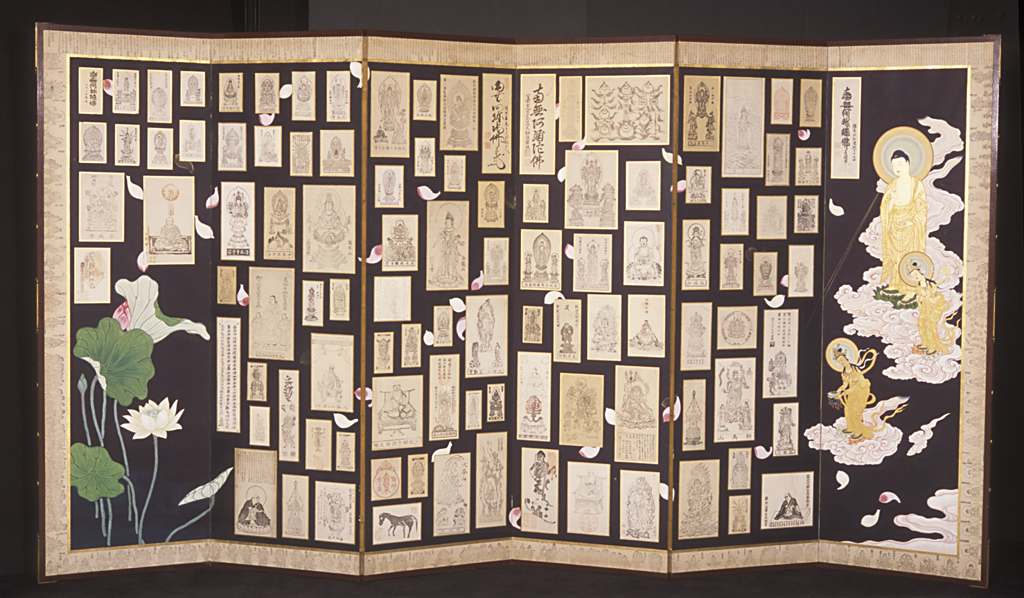Sacred Space and Japanese Art at the Spencer Museum of Art
Entry by Pinyan Zhu
This screen displays Buddhist prints assembled from different temples and shrines in Japan collected during pilgrimage travels, mainly from the Shikoku and Saikoku pilgrimage routes. Many of the prints date from the 19th century. Some of the images in these individual prints are of the main icons worshipped at the temples. In addition, a long scroll of prints depicting icons and scriptures was cut and pasted around the four edges to frame the entire screen.
The screen was made in the 20th century, later than the prints. The paper for the screen is painted in dark blue indigo, a color often employed as a background to copy Buddhist scriptures. The panel on the far right depicts an image of Amida Buddha descending on clouds whilst being attended by two Bodhisattvas below. The three deities are believed to welcome spirits of the dying into the Western Pure Land. The panel on the far left depicts a blossoming lotus, a bud, and its leaves. Lotus petals are dispersed throughout all six panels.
The practice of traveling to sacred sites became popular during the Edo period and pilgrimage prints were often collected as a means to accumulate merit and to maintain associations with the deities depicted. While some people mounted their collected prints onto hanging scrolls, pasting them onto a screen is more unusual.
Screen with Osugata (Buddhist pilgrimage prints)
Japan, artist unknown
Mid 1900s, Shōwa period (1926–1989)
Prints from Edo period (1600–1868) to Meiji period (1868–1912)
Woodblock prints mounted on paper-panel screen
134 x 263 cm, with frame 149.2 x 279 cm
Gift of David H. Weinglass and Marilyn Carbonell, 2001.0076

